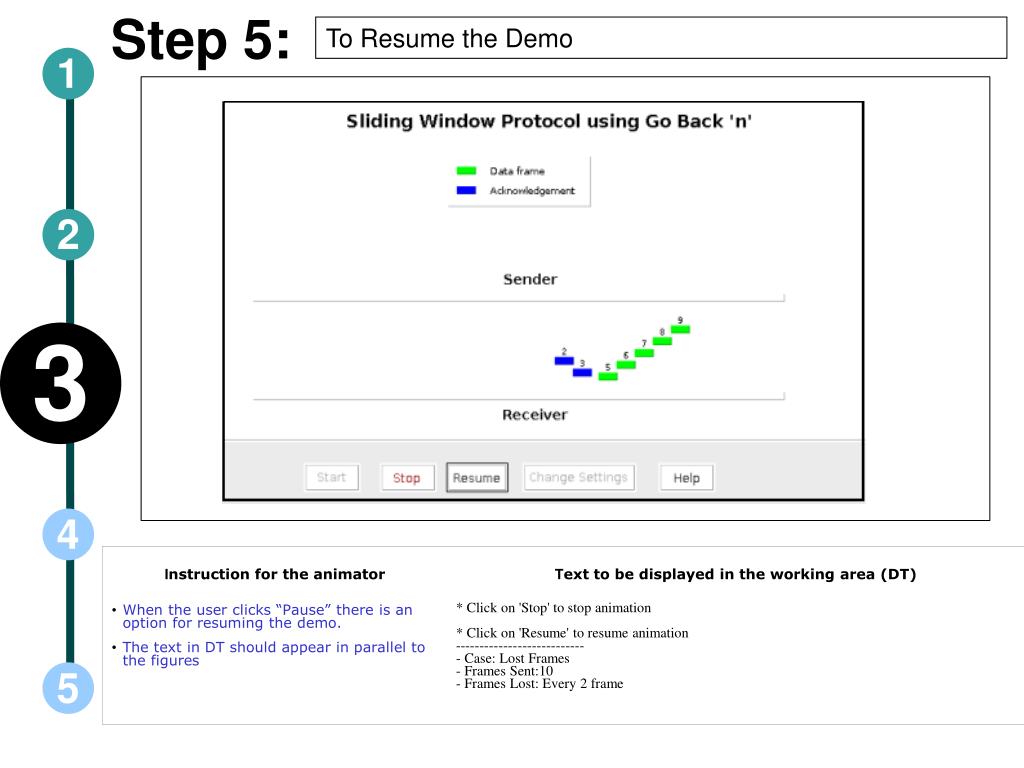

The window slides when a correct frame arrives, the sliding occurs one slot at a time. The receive window is mainly an abstract concept of defining an imaginary box whose size is 1and has a single variable Rn.

The range that is in the concern of the receiver is called the receiver sliding window. Receive (sliding) window for Go-Back-N ARQ In case if the value of N is equal to 1 then this protocol becomes a stop-and-wait protocol. Whenever a valid acknowledgement arrives then the send window can slide one or more slots.Īs we have already told you the Sender window size is N.The value of N must be greater than 1. Once the data get acknowledged by the receiver then that particular data will be removed from the buffer.

If the timeout timer runs out then the sender will resend all the packets. The copy of sent data is maintained in the sent buffer of the sender until all the sent packets are acknowledged. The size of the send sliding window is N. The sender can transmit N frames before receiving the ACK frame. The size of this imaginary box is 2m-1 having three variables Sf( which indicates send window, the first outstanding frame), Sn(indicates the send window, the next frame to be sent), SSize.(indicates the send window, size). It is an imaginary box that covers the sequence numbers of the data frame which can be in transit. Send (sliding) window for Go-Back-N ARQīasically, the range which is in the concern of the sender is known as the send sliding window for the Go-Back-N ARQ. With the help of the Go-Back-N ARQ protocol the efficiency in the transmission increases. With the help of Go-Back-N ARQ, there is a reduction in the waiting time of the sender. This protocol is used to send more than one frame at a time. Using the Go-Back-N ARQ protocol leads to the retransmission of the lost frames after the expiry of the timeout timer. In case if the sender does not receive any acknowledgement then the entire window of the frame will be retransmitted in that case. In case if the receiver receives the out of order frame then it simply discards all the frames. In that case, the receiver sends the independent acknowledgement for that frame. In case after the expiry of the acknowledgement timer, suppose there is only one frame that is left to be acknowledged. By discarding silently we mean that: “Simply rejecting the frame and not taking any action for the frame". Thus receiver silently discards the corrupted frame. If the receiver receives a corrupted frame, then it silently discards that corrupted frame and the correct frame is retransmitted by the sender after the timeout timer expires. It is important to note that the new acknowledgement timer only starts after the receiving of a new frame, it does not start after the expiry of the old acknowledgement timer. When the timer expires then the receiver sends the cumulative acknowledgement for all the frames that are unacknowledged by the receiver at that moment. This protocol makes the use of cumulative acknowledgements means here the receiver maintains an acknowledgement timer whenever the receiver receives a new frame from the sender then it starts a new acknowledgement timer. In Go-Back-N ARQ, the size of the sender is N and the size of the receiver window is always 1. This protocol is a practical approach to the sliding window. The sender keeps a copy of each frame until the arrival of acknowledgement.

Go-Back-N ARQ is mainly a specific instance of Automatic Repeat Request (ARQ) protocol where the sending process continues to send a number of frames as specified by the window size even without receiving an acknowledgement (ACK) packet from the receiver. In this tutorial, we will be covering the Go-Back-N Automatic Repeat Request protocol for Noisey channels in the data link layer.


 0 kommentar(er)
0 kommentar(er)
